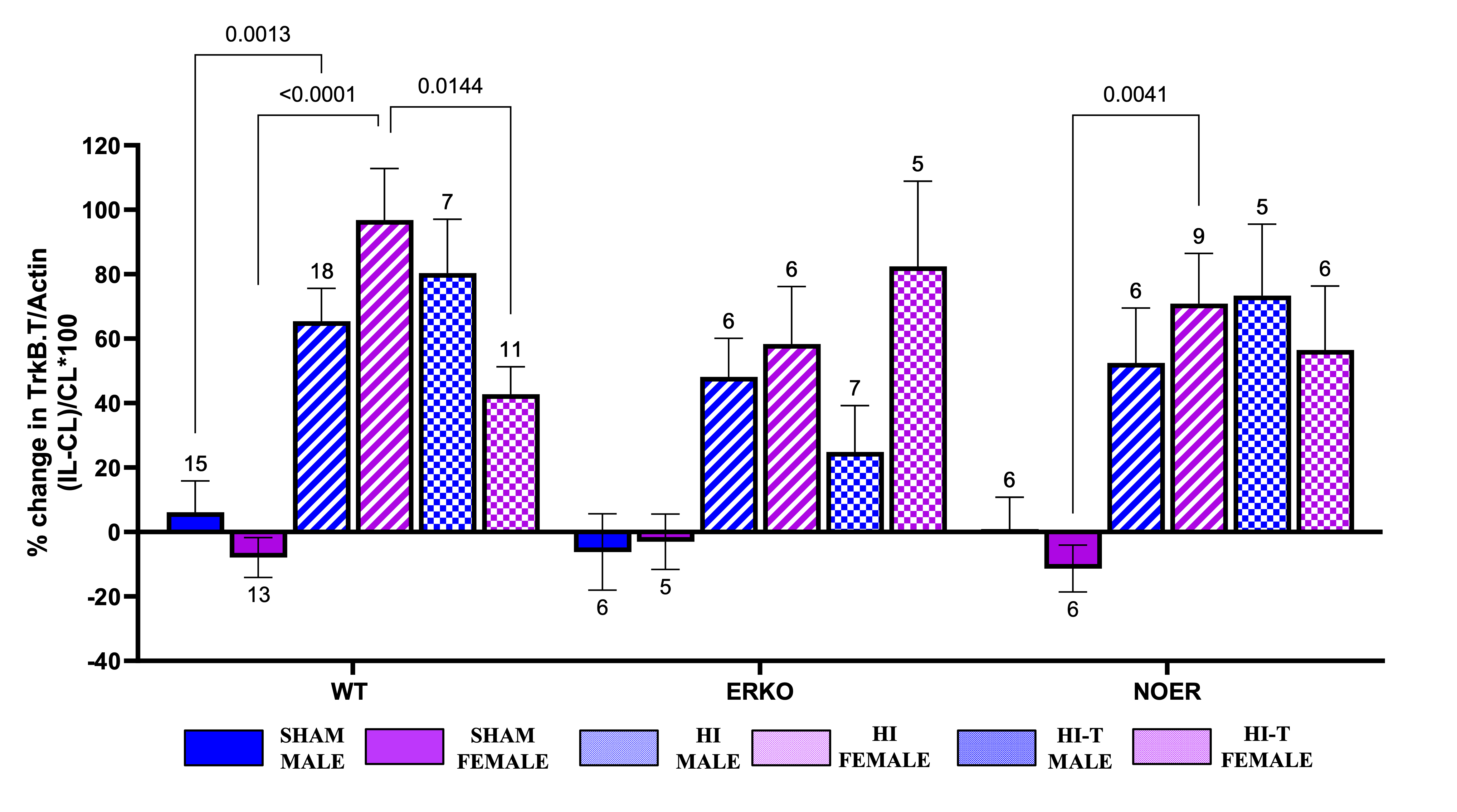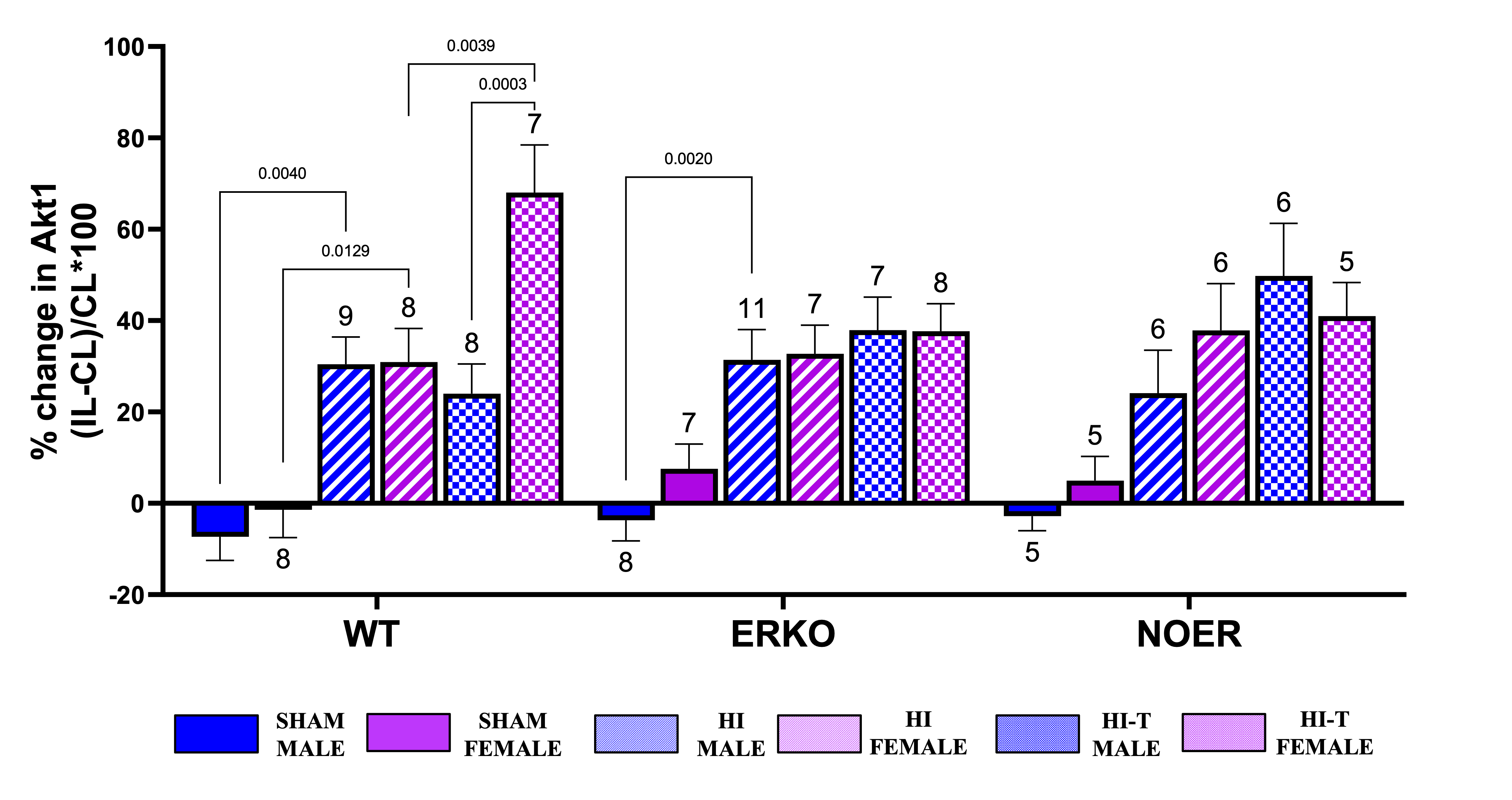Neonatology
Session: Neonatal Neurology 8: Preclinical
317 - Tyrosine kinase B receptor mediated sex specific neuroprotection following neonatal hypoxia-ischemia requires non-classical non-genotropic estrogen receptor alpha signaling
Monday, May 6, 2024
9:30 AM - 11:30 AM ET
Poster Number: 317
Publication Number: 317.2864
Publication Number: 317.2864

Onur Taparli, MD (he/him/his)
Research Associate
State University of New York Downstate Medical Center College of Medicine
Brooklyn, New York, United States
Presenting Author(s)
Background: Neonatal hypoxia ischemia (HI)-related brain injury leads to learning and memory deficits in children. We have previously shown that tyrosine kinase B receptor (TrkB)-mediated neuroprotection is estrogen receptor alpha (ERa)-dependent and female-biased in the hippocampus following neonatal HI.
Objective: We hypothesized that TrkB-mediated female biased long-term neuroprotection is regulated by non-classical non-genomic ERa pathway. To test this hypothesis we utilized ERa wild type (WT), ERa complete knockout (ERaKO), and nuclear-only ERa (NOERa) mice to determine downstream signaling pathways of TrkB and long-term learning/memory following sham and HI surgery.
Design/Methods: Postnatal day (P) 9 male and female WT, ERKO, and NOERa mice were exposed to either sham or HI surgery. Starting from 10 min of HI or sham surgery, mice received either vehicle control or the TrkB agonist, 7,8-dihydroxyflavone (7,8-DHF), daily for 3 or 7 days for subsequent behavioral testing and imaging. At P12, hippocampal AKT1/3, ERK1/2 mRNA and protein expressions were determined as well as total TrkB (f-TrkB, t-TrkB) and actin. At P90+, EPM was performed followed by T2 weighted brain MRI.Percent hippocampal and hemispheric volume losses were measured with ITK-SNAP.ANOVA was used to analyze multi-group comparisons.
Results: HI increased hippocampal truncated TrkB (t-TrkB) protein in WT male and female mice. 7,8-DHF decreased t-TrkB/actin protein expression only in the WT female hippocampus post-HI (p=0.01). Sex specific TrkB agonist effect required non-classical non-genotropic ERa pathway because 7,8-DHF did not decrease the t-TrkB expression in ERaKO and NOERa mice. Similarly, HI increased hippocampal AKT1 mRNA in WT male and females compared to sham 3 days post HI. 7,8-DHF mediated increased AKT1 mRNA expression observed in WT female hippocampi post-HI (p=0.0003). This upregulation of hippocampal AKT1 mRNA in WT females is eliminated in ERaKO and NOERa mice. Thus, sex specific TrkB agonist effect on AKT pathway required non-classical non-genotropic ERa signaling. WT female mice spend statistically significantly more time in the open arm at 5-10 min segment of the test post-HI (p=0.0009) that is recovered by the 7,8-DHF therapy in an ERa dependent way (p=0.05) (NOERa EPM testing still ongoing). The % time spent in the open arm positively correlated with the hemispheric and hippocampal injury (R2: 0.42 p< 0.001, R2: 0.32 P< 0.001).
Conclusion(s): Our results show that female-biased TrkB-mediated neuroprotection is dependent upon activation of non-classical non-genomic ERa pathway.


